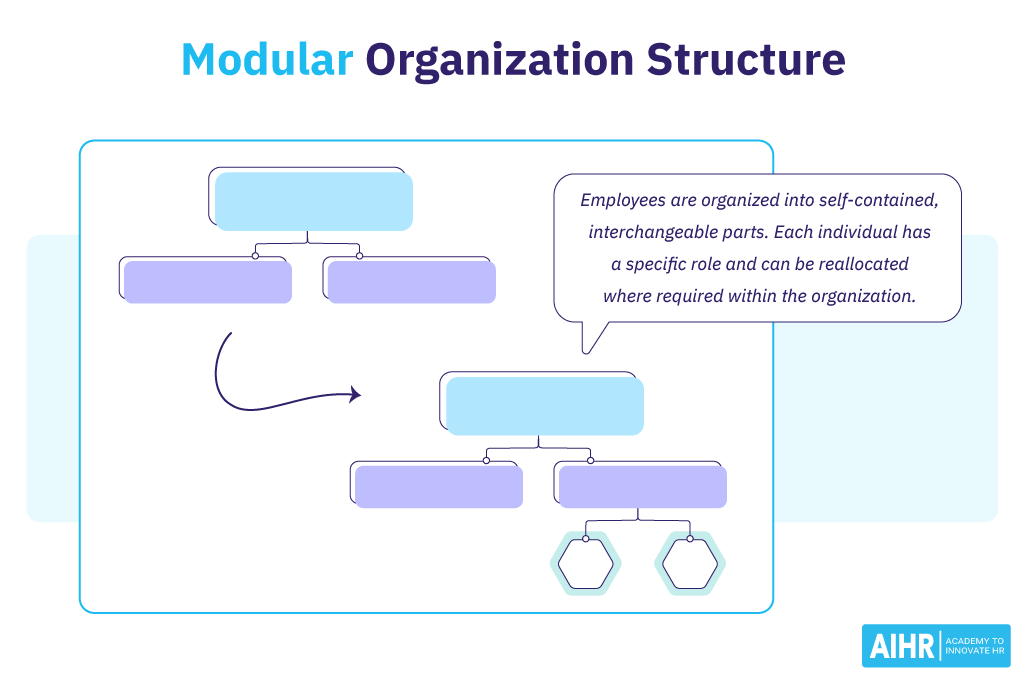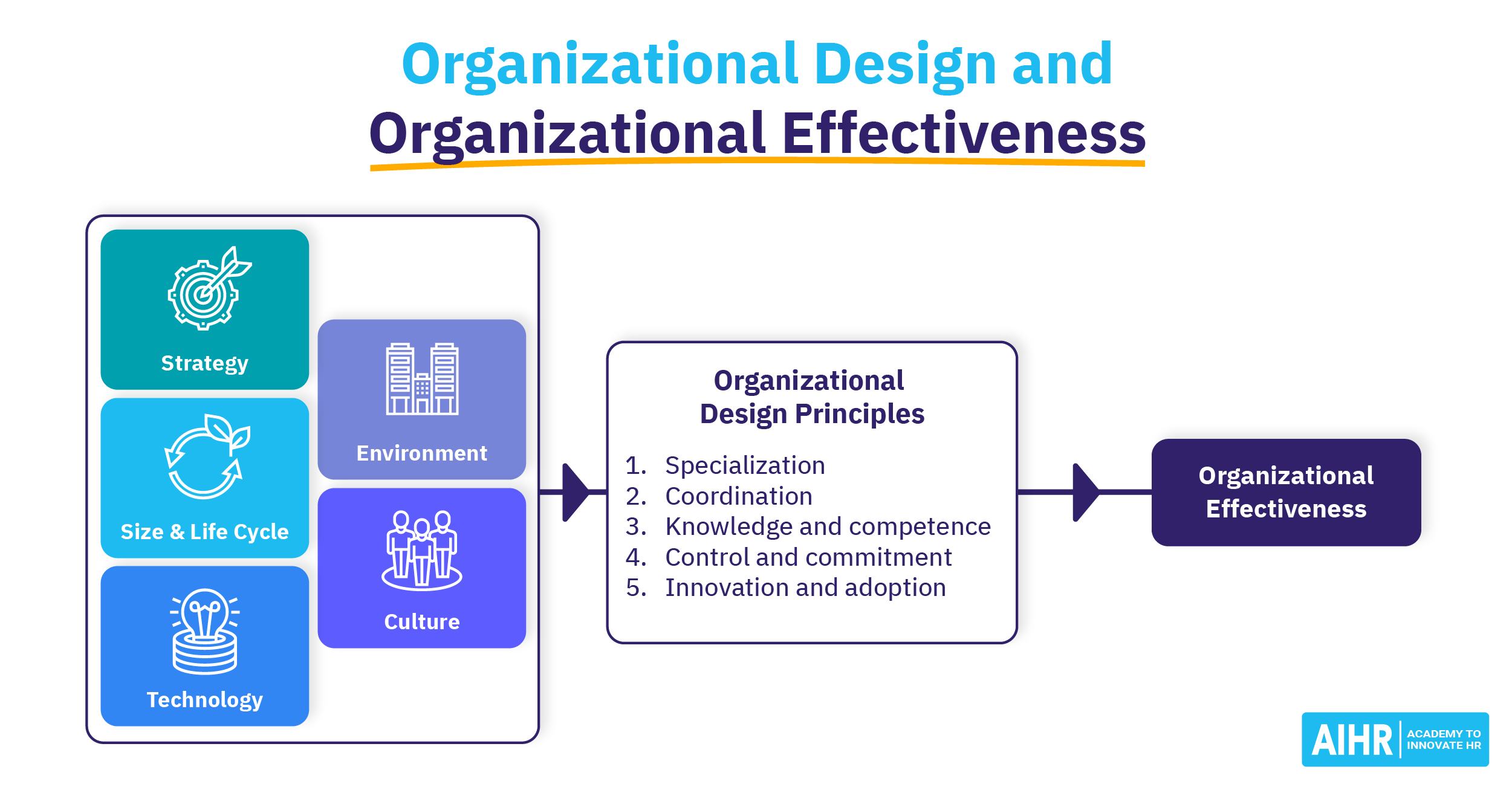Modular Organization
What is a modular organization?
A modular organization is a structure in which employees are organized into self-contained, interchangeable parts. In other words, it’s a system in which each individual has a specific role and can be easily reallocated to where resources are required within the organization. Informally, this is also referred to as a plug-and-play design.
This type of organizational structure is becoming increasingly popular as businesses strive for more flexibility and efficiency. Breaking down the company into smaller, easily manageable parts makes it easier to adapt to rapidly changing markets and needs, as well as to move and allocate resources across organizational priorities.

What is an example of a modular organization?
The structure of the majority of software businesses is a well-known and common illustration of a modular organization. In a company similarly structured, one unit is responsible for developing software, another for providing customer support, and so on. Because of this, each team is able to have more specific knowledge and skill, which ultimately results in the teams being more productive and successful.
In this model, teams are put together for specific projects and are allocated from these units to participate. Another example is organizations that have a flexible resource pool which is usually managed through a Project or Resource Management Office (PMO or RMO). A popular trend is to also have a small unit of modular resource operate from the “Office of the CEO/COO” with a key focus on being deployed on strategic initiatives.
When organizations change, this type of organizational design is easier to scale or wind down. It also allows more flexibility than a traditional functional hierarchical organization. This helps to contain costs as well as enable the organization to quickly move resources between projects.
Advantages of a modular structure/organization
There are several advantages to a modular organization structure:
- It allows for more flexibility and adaptability. With a modular organization, you can easily change the way different parts of the company work without having to make major changes to the entire company.
- Makes it simpler to scale up or down depending on what is required. If your company is expanding at a quick rate, you have the ability to add additional modules as required. In the event that business is sluggish, you have the option of reducing the number of modules without having to dismiss staff or shut down areas of the organization.
- The flexibility afforded by a modular design fosters inventiveness and creativity. You can encourage greater creativity and innovation in the workplace by empowering the various divisions of the firm to do their own research and come up with fresh concepts on their own. This has the potential to contribute to increasing levels of production and earnings.
- Build institutional knowledge: A modular design lends itself towards building institutional knowledge as employees move across various areas of the business and get to know and understand how the interrelated parts function. Often this allows for new ideas or greater alignment to emerge, which leads to better performance.
Disadvantages of a modular structure/organization
The use of a modular organizational system comes with a few significant drawbacks to consider.
- It may become challenging to manage a modular system as it expands and changes over time. In case the modules are not well maintained, they have the potential to become disorganized and difficult to control.
- Developing and preserving standard operating procedures across a variety of modules may be a tough endeavor. This might result in inconsistencies in the way work is completed, which in turn reduces the overall efficiency of the business.
- The use of a modular structure might be quite intimidating for individuals who are just starting out with the company. They could have a hard time comprehending how the system operates and figuring out where they are in relation to the bigger picture.
- Modular systems require robust governance and management to be effective. If not managed well, modular systems can become slow, costly, and ineffective.







